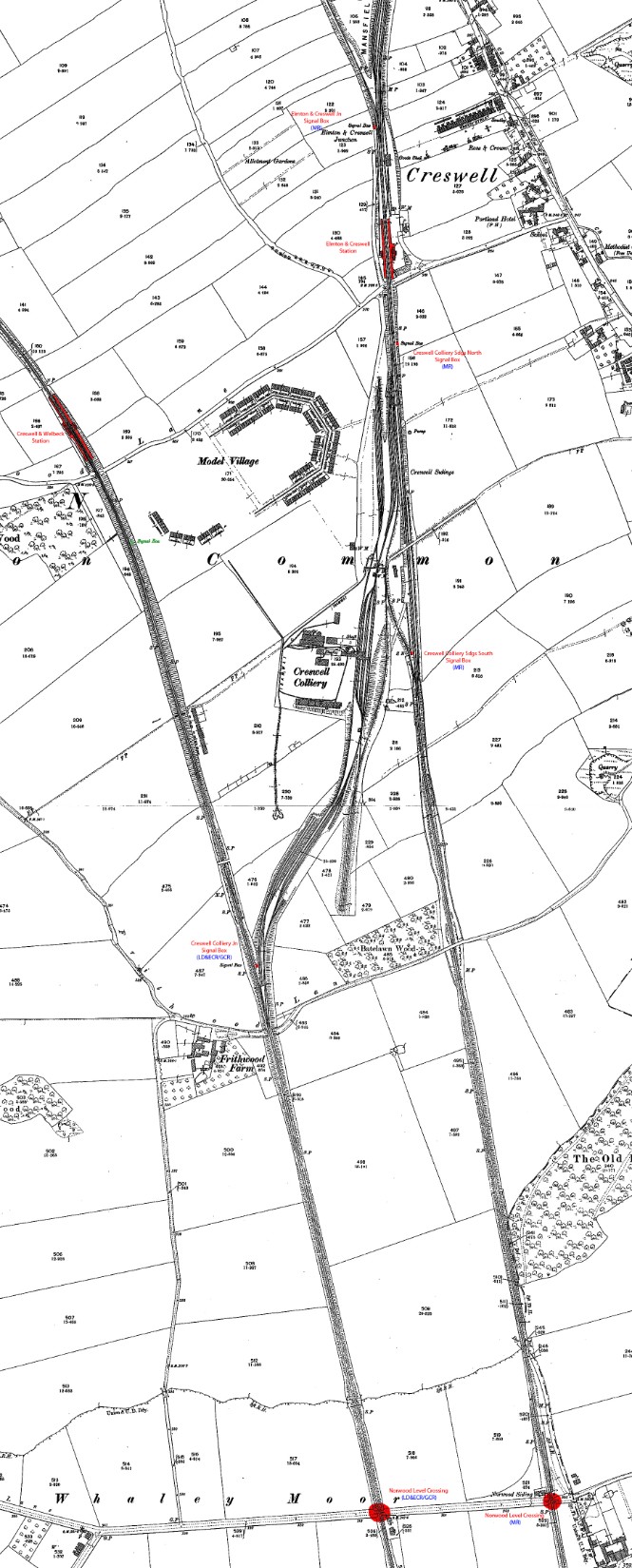Starting out
OK here goes.
This is my little blog about my first real layout. I'm going to attempt to capture an area I lived in back when I was a kid.
The Inspiration
Creswell is a small village in North East Derbyshire. Originally a mining village, Creswell had two stations - namely Welbeck & Creswell (LD&ECR 1897-1939) and Elmton & Creswell (MR 1875-present).

This wonderful map shows the LD&ECR to the left and the MR to the right with linking across the colliery.
I'm focusing on the MR as there is little information on the LD&ECR railway which was closed shortly after the troops left for WW2. However I would like to revisit this later when more research has been done. I'll try to bear it in mind when designing the layout so it can possibly be linked in at a later point. For now I am quite happy to start with the MR/LMS line I grew up around.
"Elmton & Creswell" or "Creswell" as it now known was part of the Midland Railway Clowne branch which was created by The Mansfield Lines Act of 8 July 1865 which authorised the construction of the branch along with others in the area which was undergoing rapid industrialisation, especially in the coal and iron industries.
Elmton & Creswell station c1875
The station opened in 1875 and did until the 1980's. It is now a part of the Robin Hood line and sees regular passenger service, albeit without the use of the original station. Having grown up there in the 80's I fell in love with the station building and the wonderful design of Midland Railway architecture. Sadly the station was in disrepair - even then and has been used as storage in Arnold Smith & Sons car parts/scrapyard since. The Station Master's house still exists there, but other buildings such as the goods shed, weighbridge office and smaller platform waiting room have been removed. I remember vaguely the weighbridge office being there in a yard that was inaccessible to children. The two original MR signal boxes (one at the station and another down the line) were replaced with a later wooden box in 1946 which has been refurbished a few times and still exists.

The 1946 box - in need of repair c1977
Today both the station and station masters house also remain. Both in need of love, but structurally viable, It's terrible that such beauty is left in this state and building this layout is my way of trying to preserve a little of this before (I hope not) nothing is left of it.
Traffic on the line is sparse with Robin Hood line traffic. I am unsure if any freight passes through these days. The one time I got to travel on the line in it's original guise was being pulled behind a Black Five as part of a commemorative display. 4498 Sir Nigel Gresley was also in service that weekend. A service was run from Worksop to Shirebrook Depot.

Sir Nigel Gresley A4 in service leaving Elmton & Creswell junction towards Worksop c1987
Since then I have had a fondness for the line and became an avid researcher of its history. My father is a long time OO modeller and since school I have built and collected with him. Now I have my own home and space so it's time to 'live the dream' and build my childhood memories - but with a twist. Creswell was run down in the 80's and I don't want to recreate that. Instead I want people to see it as it was c1936, before WW2 and with some life in it. By then the line was run by LMSR and the MR had been amalgamated in the grouping of 1921, but I intend to run some MR locos purely for colour as 'commemorative runs' like the one I had as a kid :-)
-
 4
4




5 Comments
Recommended Comments
Create an account or sign in to comment
You need to be a member in order to leave a comment
Create an account
Sign up for a new account in our community. It's easy!
Register a new accountSign in
Already have an account? Sign in here.
Sign In Now